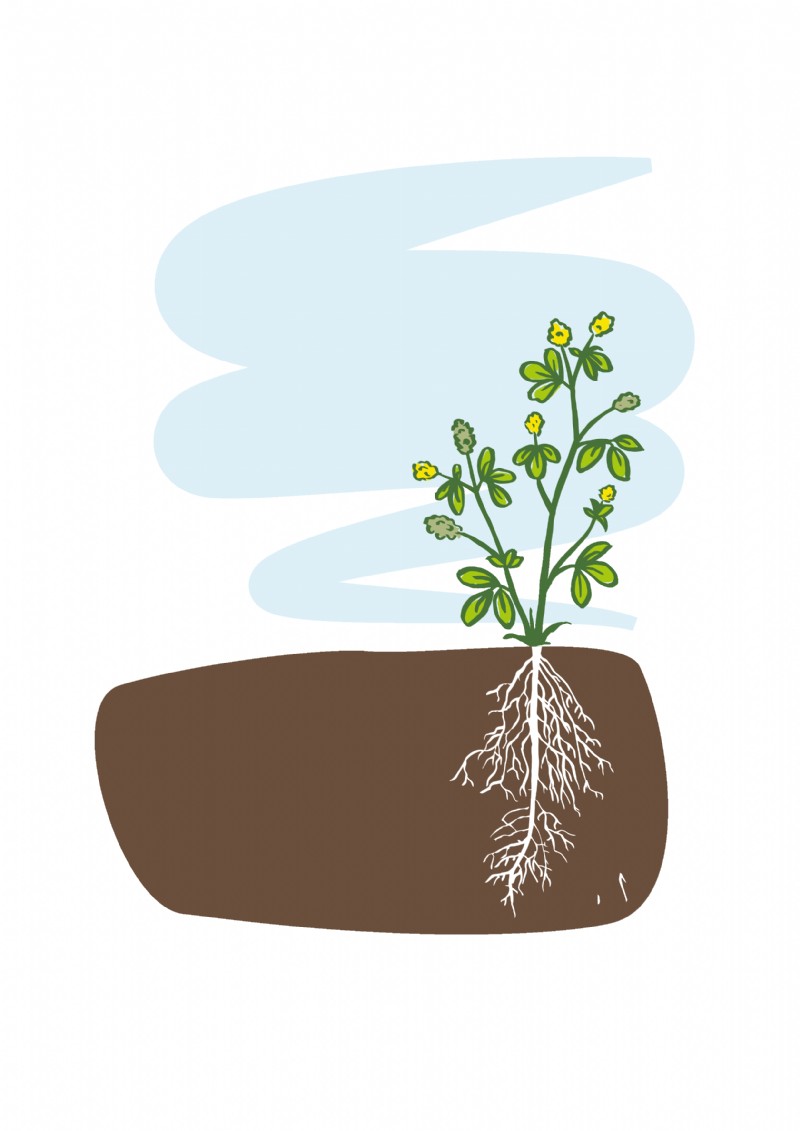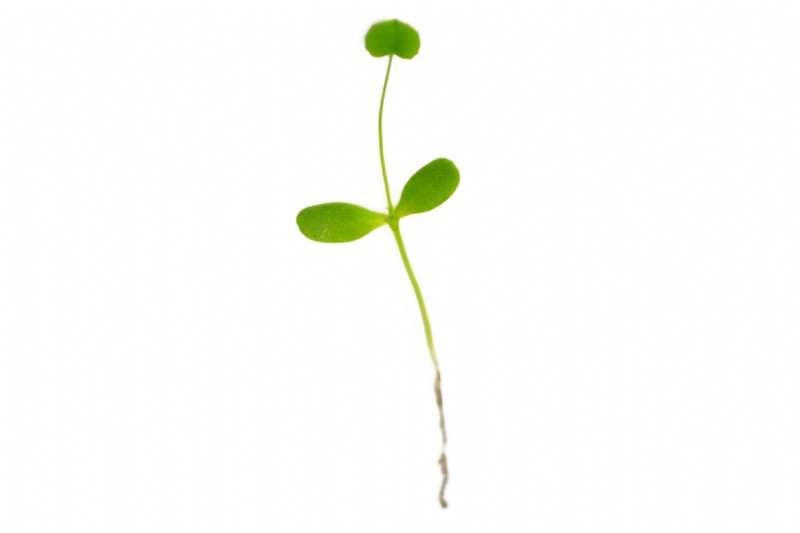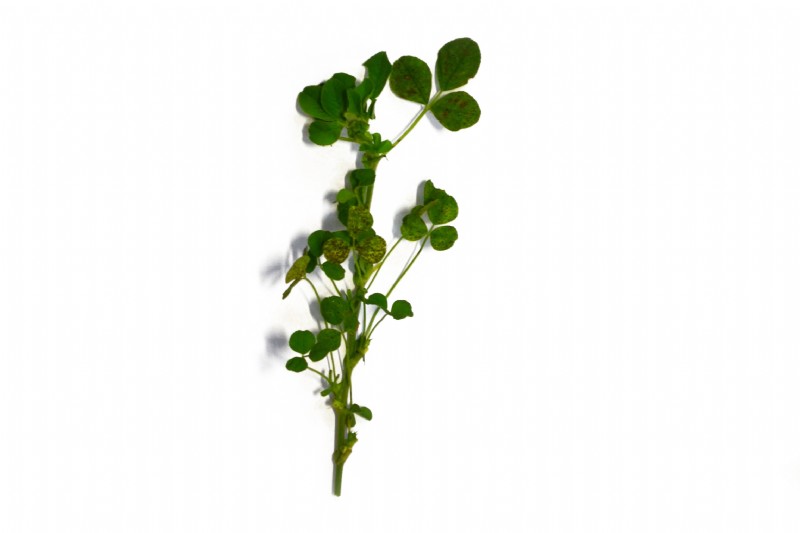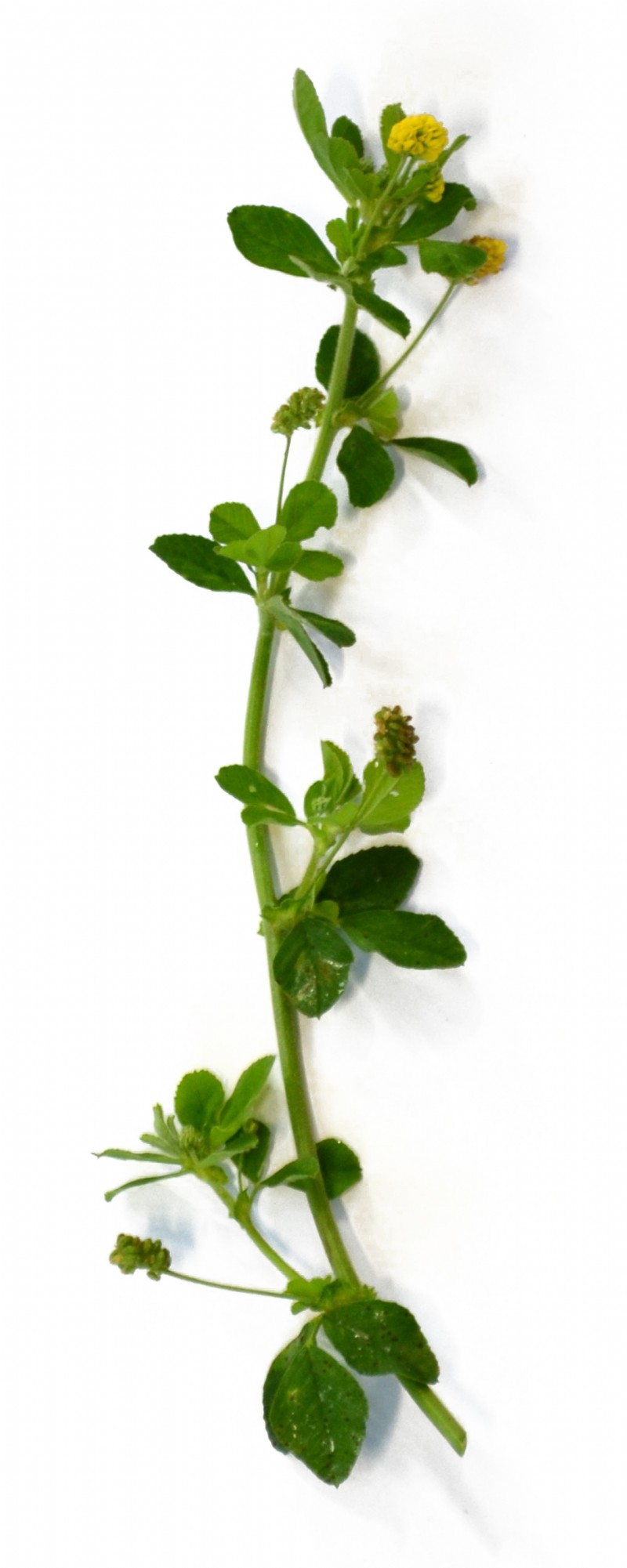Yellow Trefoil / Black Medick
Yellow trefoil (also known as black medick) is a short lived annual/biennial legume, with a low growth habit making it a common choice for undersowing and soil improvement.
Uses
Generally used as a component as an undersowing mixture, or in a traditional green manure soil improving mixture.
Persistence
This is a short lived plant which will die off after flowering. However, it sets large quantities of viable seed very rapidly, making the crop behave as if it were perennial. Although seeds may come back as weeds, they are rarely a major problem.
Strengths
The low growth habit makes it a common choice for undersowing to spring cereal to fix N and suppress weeds, providing a vigorous green manure once the main crop is harvested. It grows early in the spring.
Frost Tolerance
Yellow trefoil will survive over the winter and flower the following year.
Yield
4 - 4.5t DM per ha.
Sowing Rate Advice
4kg per acre / 10kg per ha.
Seed of yellow trefoil is small and should be broadcast or drilled at a shallow depth (not more than a few mm). Sowing too deep will reduce the germination dramatically. The soil should be rolled after sowing to increase soil moisture contact with the seed.
Mixture Sowing Rate Advice
1kg per acre / 2.5kg per ha
Often sown at 1 kg per acre as an undersowing mixture with white clover, at a total rate of 3 kg per acre.
Ideal Sowing Time
March - May is the ideal time for sowing in the spring. If it is to be under sown in a spring cereal, it should be sown in May, after the cereal is established. Mid to late August is the best time for an autumn sowing. Establishment is less likely to be reliable if sowing extends too far into September.
Management
Yellow trefoil should be mown regularly whenever it attains a height of 20cm. The first cut may be before this if there is a severe weed problem. Mowing is important to maintain the viability of a yellow trefoil crop. The frequency of mowing will vary between sites. On a dry sandy soil, it may only need cutting twice in the season. However, on fertile soil in a warm wet summer it may need cutting more often.
Distinguishing characteristics
Seed
Yellow trefoil is a rounded, kidney shaped seed. It varies from light yellow to pale green in colour, with a smooth, rounded texture. It is similar in size to many annual clovers like persian or berseem clover, with a length of 2mm.
Seedling
Yellow trefoil produces a pair of cotyledons, they are a rounded, oblong shape. The cotyledons are longer than they are wide, giving them a more rectangular shape than some true clovers. The first true leaf is similarly oblong in shape with an angular, hexagonal margin and a reasonably long stalk (shorter than lucerne seedlings). The true leaf blade may be sparsely hairy.
Flowering Plant
Pale green in colour, this is generally a rather prostrate plant, with angular stems, reaching 0.5 metres in length.
The leaves are trifoliate, with the end or terminal leaflet having a longer stalk than the laterals. The leaflets are broadest towards the apex and taper towards the stalk. Each leaflet has a slightly serrated margin and sparse hairs.
The stipules are large and broad, sharply pointed and toothed.
The flower heads are at the end of long peduncles, with small yellow flowers.
The plant has a slender taproot, with several fine branches.
Additional Info
Average seeds per kg - 200 000 - 320 000. Average protein content 19-21%.
Works well with
Frequently used with white clover in an undersowing mixture. This mixture will fill the base of a main crop brassica or cereal without affecting its yield. It reduces weed competition, adds organic matter and fixes nitrogen. It can also be used with annual species like persian or crimson clover, or mustard and phacelia, as a short term soil improving green manure.Buy Yellow Trefoil / Black Medick Straight 
You can find Yellow Trefoil / Black Medick in the following mixtures







